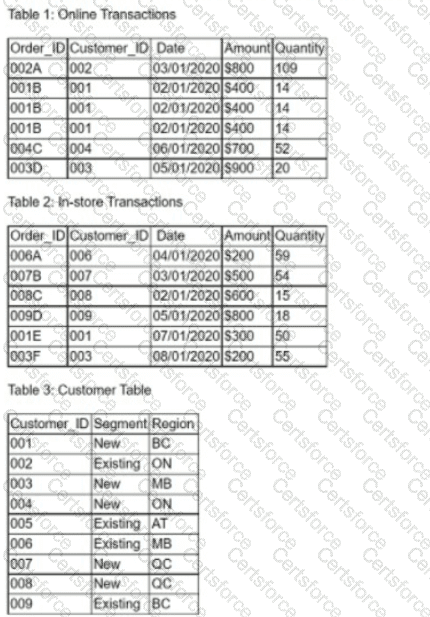A data analyst needs to create a master file that includes customer information from the tables below:

Given the three tables above, the analyst wants to filter down the information prior to joining it together. In which of the following orders should this data manipulation bo approached for the most efficient result?
Submit